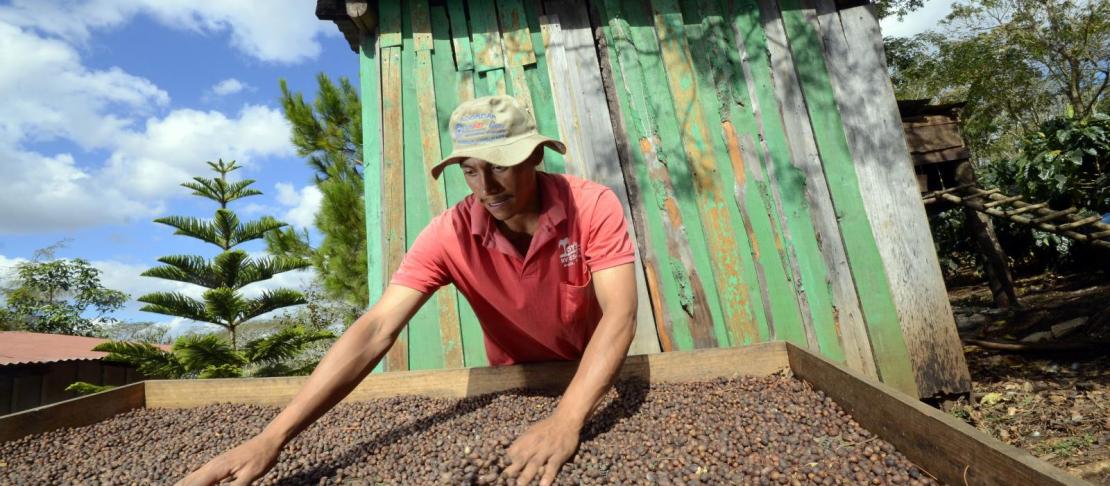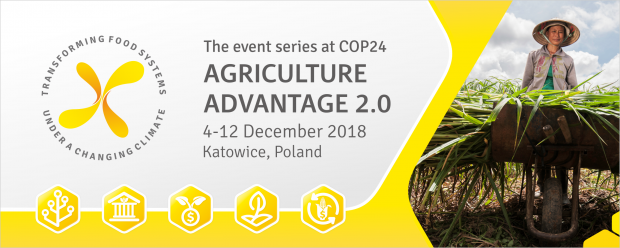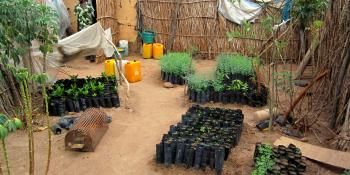Exploring transformational adaptation in agriculture under climate change

Case studies highlight experience-based lessons on managing transformative processes in agriculture.
This year at COP24, a number of organizations have come together to call for a transformation in food systems in response to climate change. There is a growing recognition amongst the international community that if we are to achieve the Sustainable Development Goals (SDGs), a transformation in food systems is inevitable. Recent papers from the Global Commission on Adaptation, the World Resources Institute and the World Economic Forum highlight approaches to achieve a transformation. But what does a transformation in food systems mean? Is it as new to us as it sounds?
A recent paper in Frontiers provides insights from a review of 23 empirical case studies of transformational adaptation in agriculture that have already occurred.
What is transformational adaptation?
In the context of agricultural systems, transformational adaptation has been defined as:
- a response to climate risks, usually in combination with other drivers;
- a redistribution of at least a third of the primary factors of production (land, labor, capital) and/or the outputs and outcomes of production (the types and amounts of production and consumption of goods and services arising from multi-functional agricultural systems);
- within a timeframe of 25 years.
Examples of two case studies included in the review:
- Increased droughts and reduced groundwater availability for irrigation in Fujian Province in China resulted in farmers shifting away from corn and wheat farming to growing apples between 2000–2012.
- In Bagerhat, Bangladesh, farmers have shifted away from rice cultivation to aquaculture by farming shrimp and prawns in areas where they used to grow rice from the mid-1980s to the early 2010s.
These transformations in agricultural systems go beyond the small tweaks otherwise made by farmers as part of adapting to new conditions.
Why do we need transformational actions?
Farmers in many places are experiencing rapid changes in weather patterns, such as the traditional start of the rains, planting dates, amounts and patterns of rainfall, and frequency of extreme weather events. While farmers accumulate a considerable amount of experience over their lifetimes (and the lifetimes of their forebears), in situations where the rate of change is relatively rapid, previous experience may be inadequate to adapt to novel conditions.
To date, most attention on adaptation in agriculture has gone toward incremental adjustments that may enable better management of climate risks and opportunities in the near-term.
But incremental adjustments in agricultural systems may not be enough to deal with the challenges that current and future generations will face: more proactive and ambitious action will be required. A considerable literature has developed over the last few years on the concept of transformational adaptation in agriculture.
What can we do to promote more transformational outcomes?
What could governments and development partners do to improve the effectiveness of transformative adaptation leading to transformational outcomes? First, more comprehensive and long-term approaches to adaptation planning could be undertaken. Actions could include the following:
- Expand the focus of adaptation planning to consider the multi-functionality of agriculture and a system-wide view of food production and consumption. In practical terms, this would entail visioning, planning, implementation and evaluation of desired agricultural futures in terms of ability to supply benefits to nutrition, livelihoods and environment, over and above benefits to national-level food security, monetary returns and balance of trade. It could also include outlook for technological breakthroughs, policy reframing, or disruptors on the demand-side.
- Apply the “stranded assets” thinking that has become well-established in the energy sector as a frame to encourage consideration of more transformative options for adaptation. For example, the re-siting or re-scaling of processing facilities, transport links and other infrastructure in major agricultural sub-sectors should be examined.
- Include arrangements for transformative adaptation in processes, such as the Global Stocktake of the UNFCCC, and institutions, such as the Green Climate Fund, and development bank loan and grant frameworks.
Need to improve the effectiveness of transformative adaptation
The review shows that transformational adaptation is already happening in agricultural systems in response to climate change. However, it is not yet clear that the transformative adaptation processes observed in these case studies have generated more sustainable agricultural systems. Our empirical research has uncovered very few examples that deliver meaningful rebalancing of participation and outcomes within food system governance. Nonetheless, the case studies do reveal how shifts in governance, particularly those in favor of disadvantaged groups, may be pivotal to transformational outcomes in adaptation.
Read the paper: Transformation in Practice: A Review of Empirical Cases of Transformational Adaptation in Agriculture Under Climate Change
Join the Agriculture Advantage 2.0 event series at COP24, a collaborative effort of more than 15 organizations with the mission to transform agricultural development in the face of climate change. Click here to see the series of events at COP24.
Dhanush Dinesh is the Global Policy Engagement Manager at CCAFS. Laura Cramer is the Science Officer at the CCAFS Flagship on Priorities and Policies for CSA.




